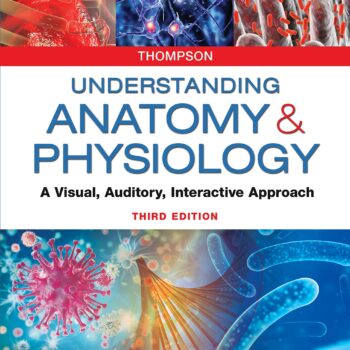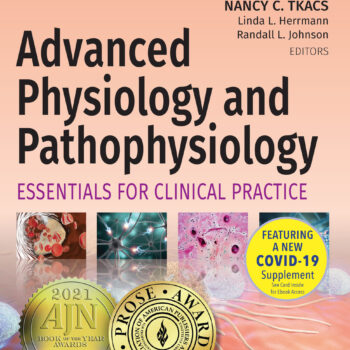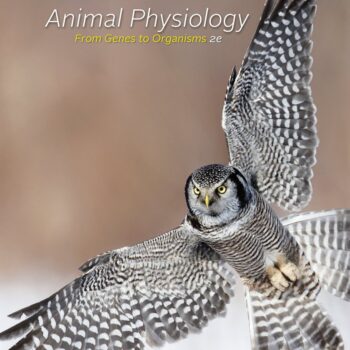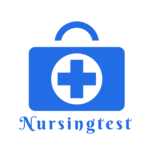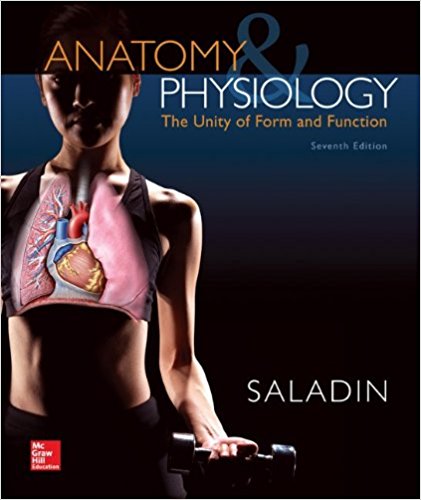
Test Bank For Anatomy And Physiology The Unity Of Form And Function Saladin 7th Edition
Original price was: $55.00.$19.00Current price is: $19.00.
Digital item No Waiting Time Instant DownloadISBN-13: 978-0073403717 ISBN-10: 0073403717
The Test Bank For Anatomy And Physiology The Unity Of Form And Function Saladin 7th Edition is one of the best helps for students as well as teachers. It serves as a complete set of questions and answers pertaining to the book, and thus, serves as a great aid in the understanding of difficult structures in the field of anatomy and physiology.
Key Features of the Test Bank
- All Inclusive: This test banking fills in the gaps of every major area that was left untouched within the textbook. This allows students to be quizzed on cell structures and organ systems ensuring everything has been touched and there is no lack of knowledge about the subject.
- Differentiation Of Questions: The Test Bank For Anatomy And Physiology offers the participation of students in multiple sources such as multiple-choice questions, a true/false section, as well as an essay section. This aids in when the students take the exam as they will expect different formats of questions which will enhance learning outcomes.
- Anatomy Test Bank Integration Help: The way the test bank has been structured, it becomes easier to find the questions. A student can simply go on to a particular topic or chapter and locate all the relevant questions making studying simpler.
How to Use the Test Bank Effectively
- Stay Updated: As there are numerous questions available pertaining to the subject, it is useful for the students to go through them regularly as they will help strengthen the area in which the student is weak.
- Use in Study Groups: Test banks are a useful resource when students are studying or working together in groups. Answering and explaining each other’s answers fosters a deeper understanding of complex concepts.
- Assistance for Educators: For teachers, this test bank makes the ideal set for composing quizzes and tests. It saves them time and ensures that the tests do not deviate too far from the syllabus.
Advantages of Using the Test Bank
Test Bank For Anatomy And Physiology The Unity Of Form And Function Saladin 7th Edition has several advantages:
- Enhances Self-Assurance: Repetitive exposures through practicing questions from a test bank may allow students to have a good sense of self-assurance when exam day comes. Letting the students know what to expect minimizes their stress during the examination.
- Boosts Performance: Students have reported scoring improved grades after using the test bank. The questions on the test bank are comprehensive and mirror what is usually found in the exams.
- Promotes Application of Knowledge: Using the test bank mitigates rote learning. It makes the students active participants in the process as they are made to reason out the concepts instead of reading from the book.
Summary
To end with, The Test Bank For Anatomy And Physiology The Unity Of Form And Function Saladin 7th Edition is an essential aid in improving comprehension and retention of anatomical and physiological concepts. Its wide coverage, different types of questions, and simplicity of use make it the most enjoyed resource by students and teachers. Incorporating this test bank into your study routine will enhance your confidence and improve your academic performance.
Test Bank For Anatomy And Physiology The Unity Of Form And Function Saladin 7th Edition
Chapter 02 The Chemistry of Life
True / False Questions
1. Minerals are organic elements extracted from the soil by plants.
2. Molecules composed of two or more atoms are called compounds.
3. Hydrogen, deuterium, and tritium are three isotopes of hydrogen.
4. Potassium, sodium, and chlorine are trace elements.
5. Ionic bonds break apart in water more easily than covalent bonds do.
6. A solution is a mixture of two or more substances that are physically blended but not chemically combined.
7. The pH of blood plasma is approximately 7.4, which is slightly acidic.
8. The high heat capacity of water makes it a very ineffective coolant.
9. In an exchange reaction, covalent bonds are broken and new covalent bonds are formed.
10. Chemical reactions in which larger molecules are broken down into smaller ones are called catabolic reactions.
11. The opposite of a dehydration synthesis reaction is a hydrolysis reaction.
12. Unsaturated fatty acids have as much hydrogen as they can carry.
13. A dipeptide is a molecule with two peptide bonds.
14. All amino acids have both a carboxyl group and an amino group attached to a central carbon.
15. ATP is the body’s most important form of long-term energy storage.
Multiple Choice Questions
16. The most abundant element in the human body, by weight, is __________.
A. nitrogen
B. hydrogen
C. carbon
D. oxygen
E. calcium
17. Sodium has an atomic number of 11 and an atomic mass of 23. Sodium has __________.
A. 12 neutrons and 11 protons
B. 12 protons and 11 neutrons
C. 12 electrons and 11 neutrons
D. 12 protons and 11 electrons
E. 12 electrons and 11 protons
18. The chemical properties of an atom are determined by its __________.
A. protons
B. electrons
C. neutrons
D. protons and neutrons
E. particles
19. Na (atomic no. 11) reacts with Cl (atomic no. 17) to become stable. In the reaction, Na will ____________, while Cl will ____________.
A. accept one electron; give up one electron
B. give up one proton; accept one proton
C. share one electron with chlorine; share one electron with sodium
D. become an anion; become a cation
E. give up one electron; accept one electron
20. Oxygen has an atomic number of 8 and an atomic mass of 16. How many valence electrons does it have?
A. 2
B. 4
C. 6
D. 8
E. 16


